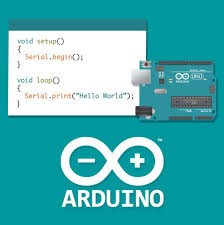Getting Started with Arduino:Coding and Much More...
|
Arduino Uno R3 |
Introducing the Arduino Platform
Arduino is an open-source electronics platform based on easy-to-use hardware and software. Arduino boards are able to read inputs - light on a sensor, a finger on a button, or a Twitter message - and turn it into an output - activating a motor, turning on an LED, publishing something online. You can tell your board what to do by sending a set of instructions to the microcontroller on the board. To do so you use the Arduino programming language (based on Wiring), and the Arduino Software (IDE), based on Processing.
Over the years Arduino has been the brain of thousands of projects, from everyday objects to complex scientific instruments. A worldwide community of makers - students, hobbyists, artists, programmers, and professionals - has gathered around this open-source platform, their contributions have added up to an incredible amount of accessible knowledge that can be of great help to novices and experts alike.
Arduino was born at the Ivrea Interaction Design Institute as an easy tool for fast prototyping, aimed at students without a background in electronics and programming. As soon as it reached a wider community, the Arduino board started changing to adapt to new needs and challenges, differentiating its offer from simple 8-bit boards to products for IoT applications, wearable, 3D printing, and embedded environments. All Arduino boards are completely open-source, empowering users to build them independently and eventually adapt them to their particular needs. The software, too, is open-source, and it is growing through the contributions of users worldwide.
Arduino Code
Arduino Nano
The main focus of the introductory lessons which follow will be on writing simple code to control the most common Arduino boards, first using USB connection with Mac or PC, and then via BLE. The lessons assume no prior knowledge of coding to boards such as these - they follow my own first faltering steps in this direction.
The other primary consideration here is value for money. Arduino boards and modules can range in price from the high end for genuine hardware, to highly affordable for clone units. Since I am not aiming for rocket science here, I have been using these lower end units and found them to work very well for my purposes (although in connecting my boards to the Arduino IDE I found that i needed to select the old BootLoader Processor option when choosing the settings - watch for this!)
There are two components to working with micro-controller development boards, such as Arduino and the related TI LaunchPad boards - writing a "sketch" to the board, which tells it how to respond to commands, and creating a document that will read from and write to that sketch. To create and send the sketch we create, we will use the free open-source-based Arduino IDE (Integrated Development Environment) software.
So, let's get started! You will need to:
Buy an Arduino board or two (either a Uno R3, or the less expensive Nano). You can purchase these directly from eBay or from a local supplier. I was able to pick up a Uno for around $AUD12, and a Nano for under $AUD10 - great value!
Download the Arduino IDE for your platform (OS X, Windows, Linux), and install. There is also the option for a web-based IDE.
Find a local supplier (or use eBay) to purchase some jumper leads and (optionally) alligator clips. You should be able to get a bunch of these for under $10. I have found that the male/female jumpers (as shown) have been the most useful, but it would not hurt to have a few of each type.
Later you will need a BLE module and a sensor or two. Generally, you should be able to get these on eBay for around $AUD5-10.


